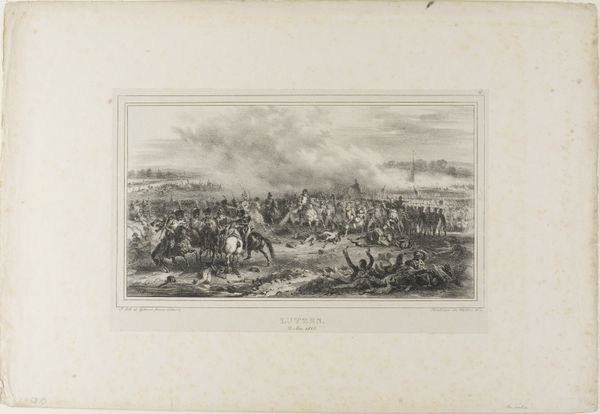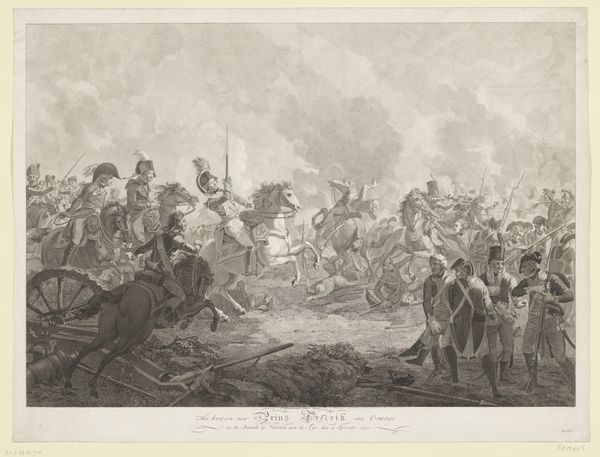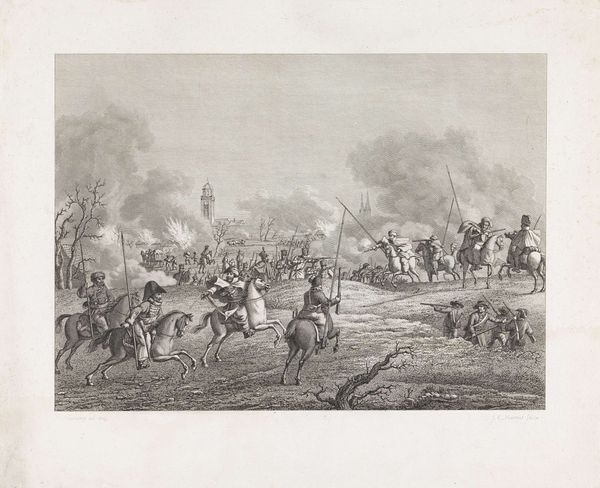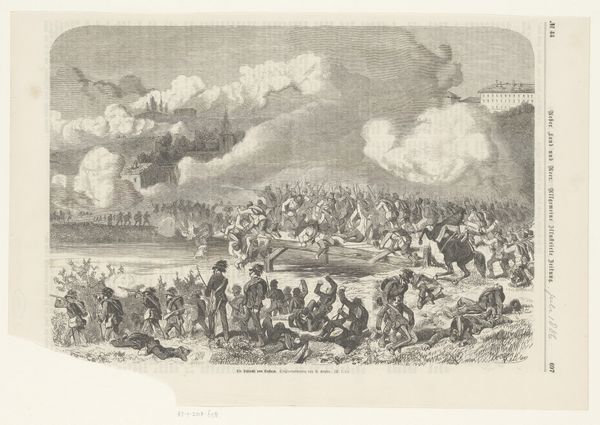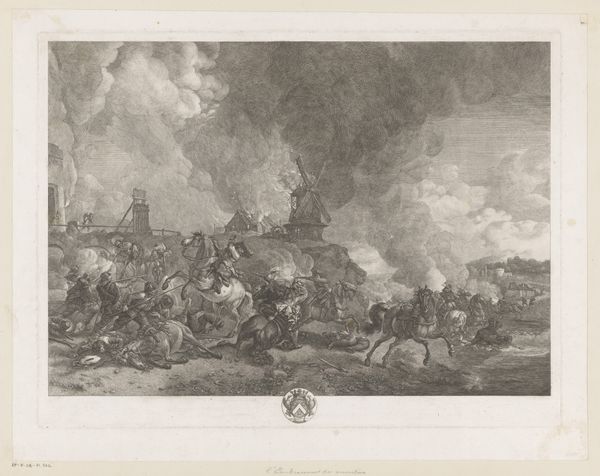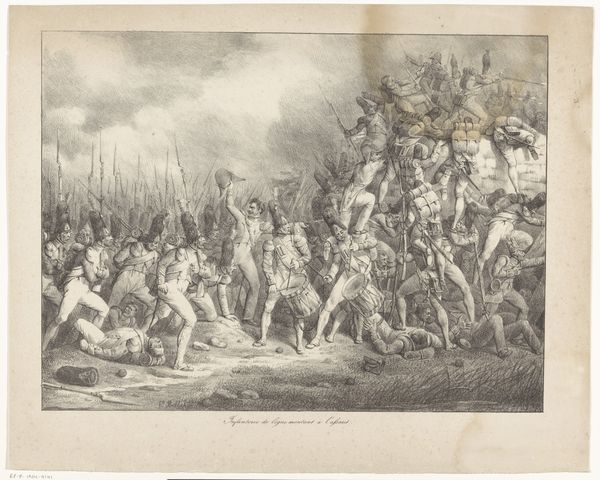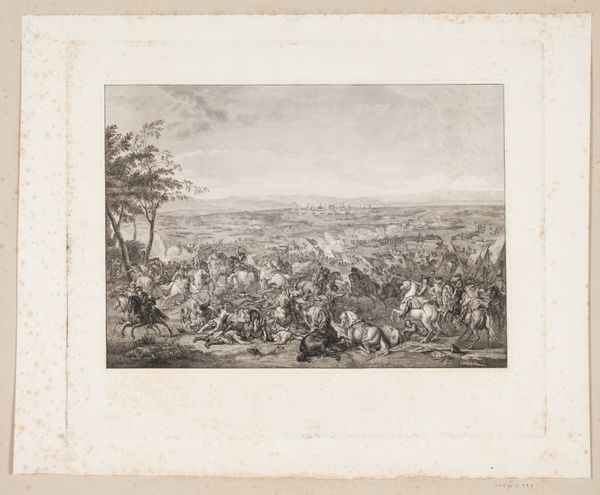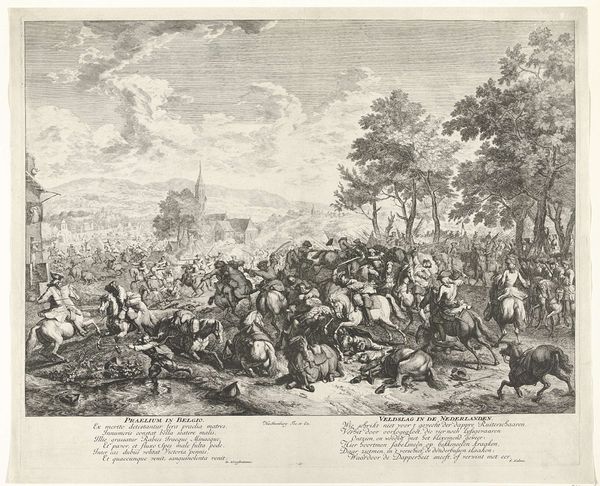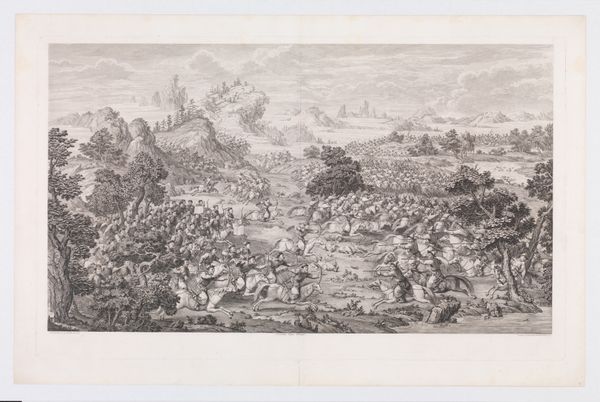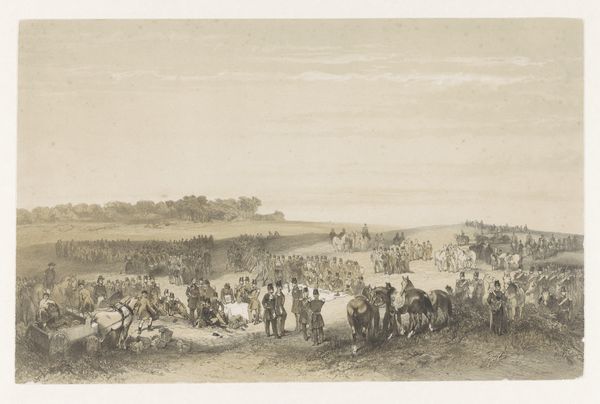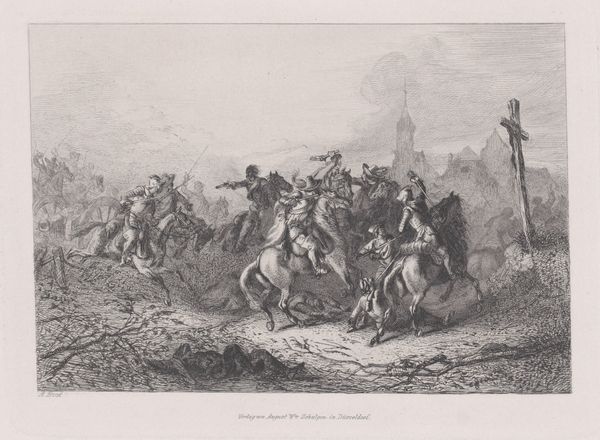
Dimensions: height 458 mm, width 617 mm
Copyright: Rijks Museum: Open Domain
Curator: Here at the Rijksmuseum, we have Christiaan Bos’s engraving, “The Battle of Malakoff,” created in 1866. It portrays a critical moment in the Crimean War. What impressions does it stir for you? Editor: Chaotic, absolutely chaotic. A sea of figures, like disturbed ants. And all those sharp angles – bayonets, shattered wood, even the clouds seem jagged. It's as if the artist is trying to trap all the energy of that battle within this single print. Curator: Indeed, the work masterfully captures the sense of turmoil, using the romantic style typical of history paintings in that era to engage emotionally with its public. Editor: Right! But doesn't that romanticizing trouble you? It’s beautiful, in a morbid way, but what about the human cost, the actual suffering? Do we lose sight of that in these grand depictions of war? It’s a delicate balance isn't it. Curator: The romantic lens served to create patriotic sentiment, and heroic portrayals were necessary to further cement political agendas. This depiction serves as a narrative for shaping the historic reception, but the engraving is still, just that - a constructed message of victory. Editor: A manufactured triumph, perhaps? It seems so... theatrical. But maybe that's part of the power, to make you feel like you're right there amidst the frenzy. It’s disturbing yet undeniably captivating. All that drama distilled into monochrome... it makes you wonder about the stories of the individuals in the fray. Curator: That’s certainly the draw of the historical genre isn't it? The drama, the pathos, as the genre attempts to capture the sweep of history and boil it down into one digestible narrative, to remind its present about the past it emerged from. Editor: And what a reminder this piece is! The swirl of action, frozen in time. Still, I hope people look past the romanticism and reflect on the reality it attempts to convey, no matter how flawed that window may be. Curator: I agree, and viewing the piece through today’s lenses prompts questions of conflict, sacrifice, and representation which become quite profound. Editor: Absolutely, this frantic dance etched into the plate echoes of debates, perhaps not always as literal as soldiers at war but resonant still in today's discourse, even our own, in a way I never thought I would find in an old print.
Comments
No comments
Be the first to comment and join the conversation on the ultimate creative platform.


